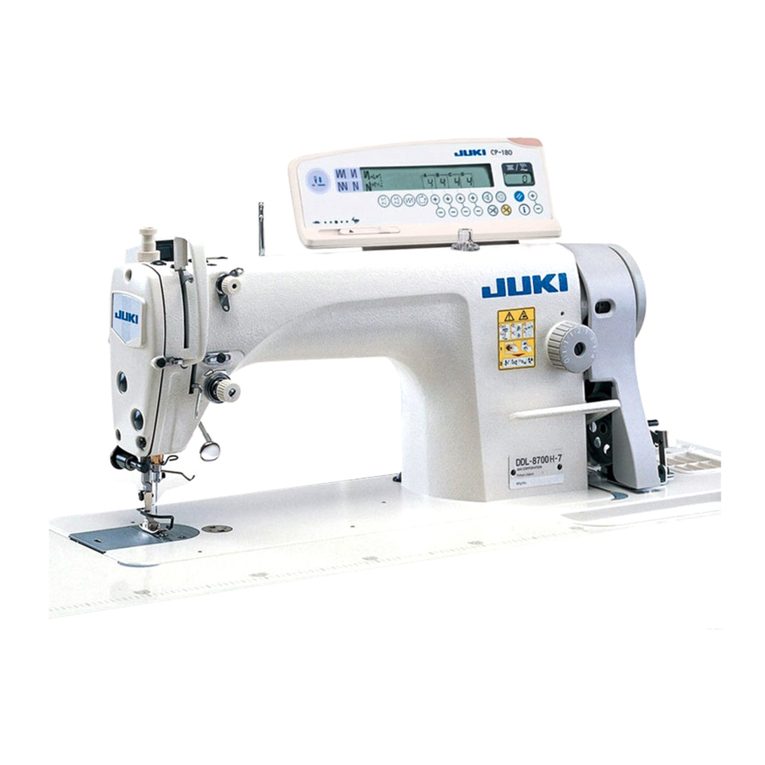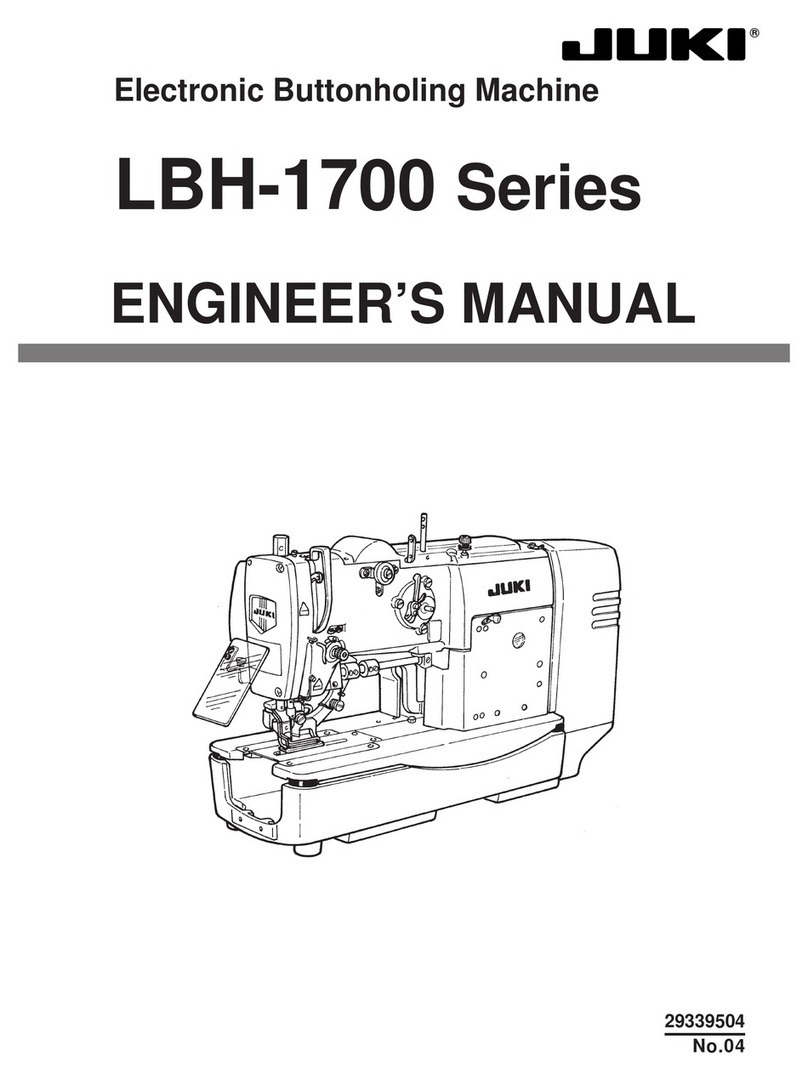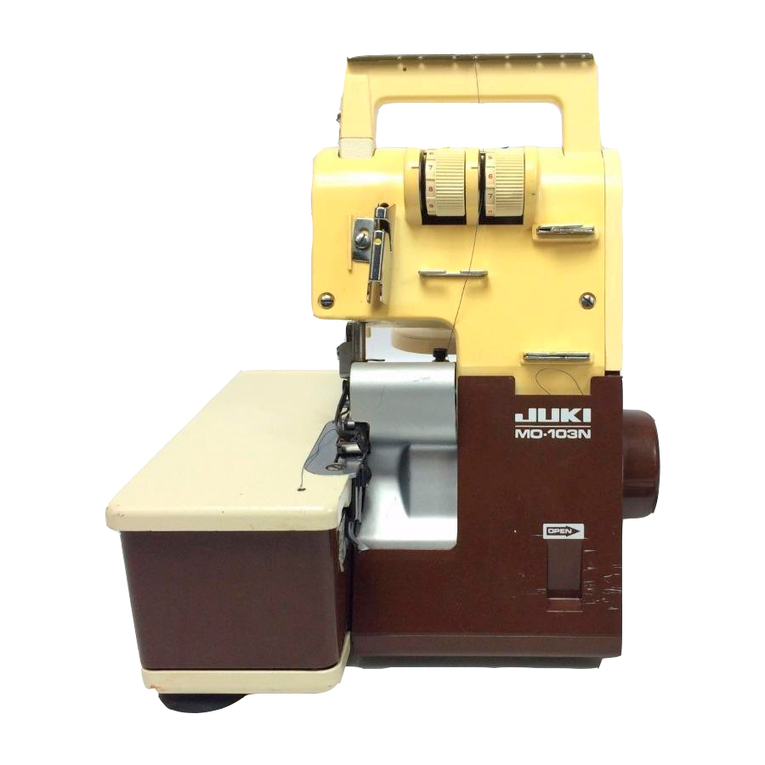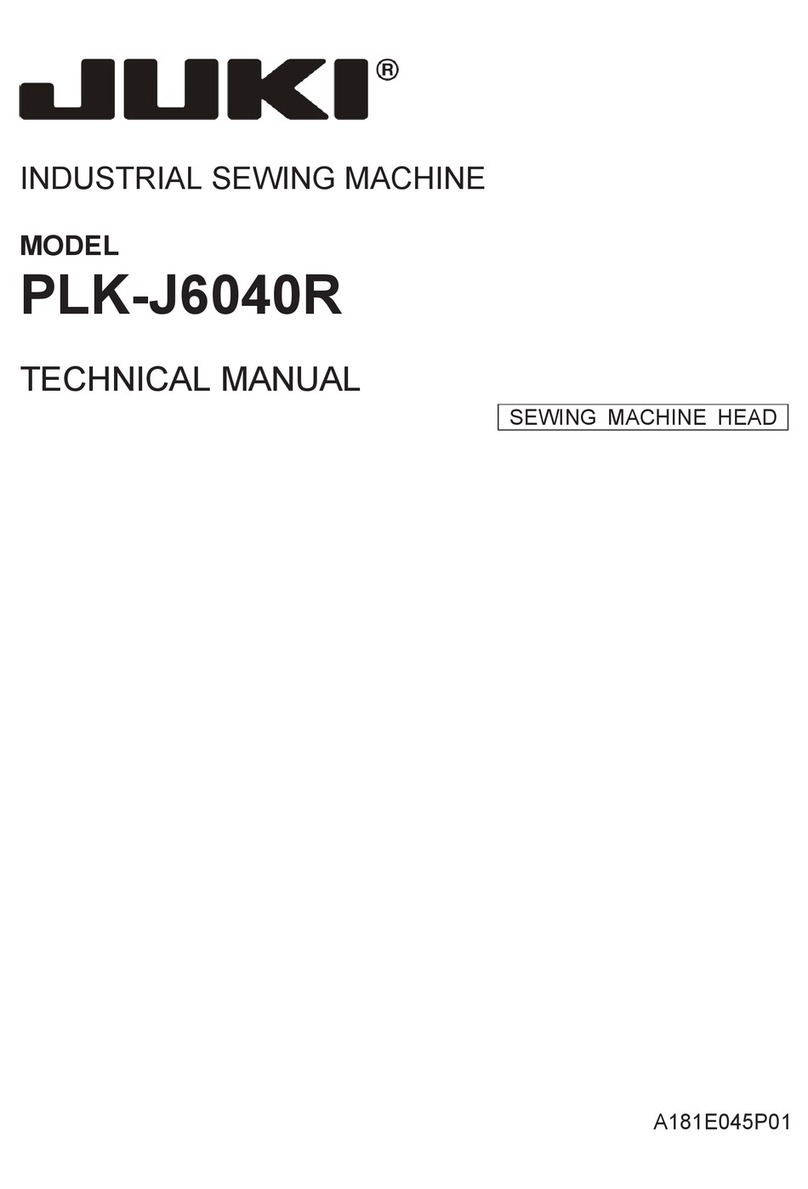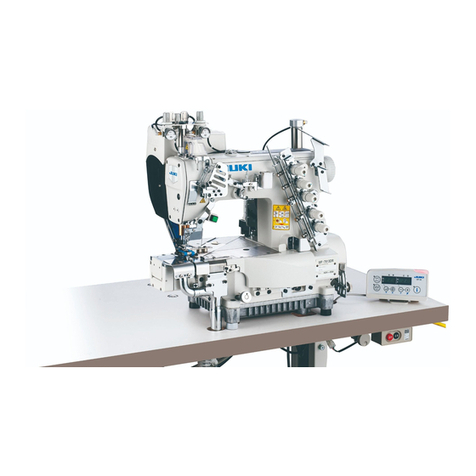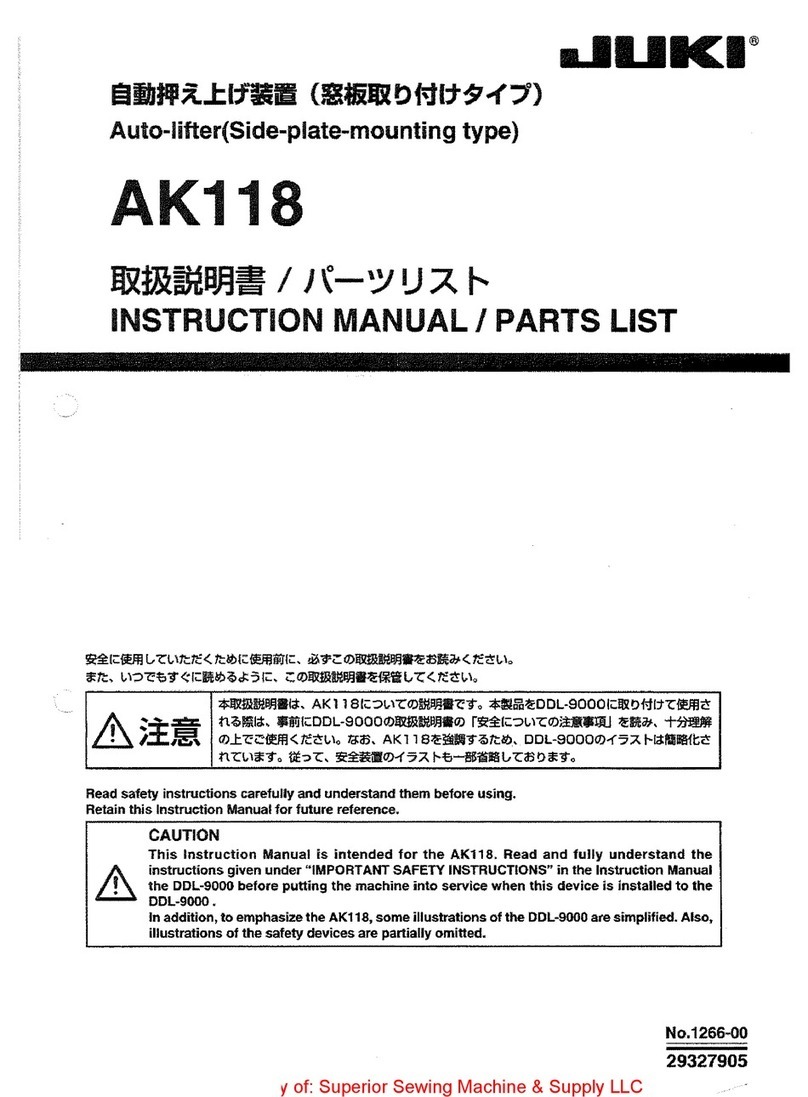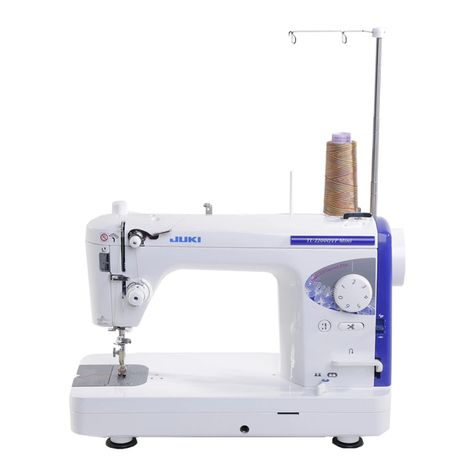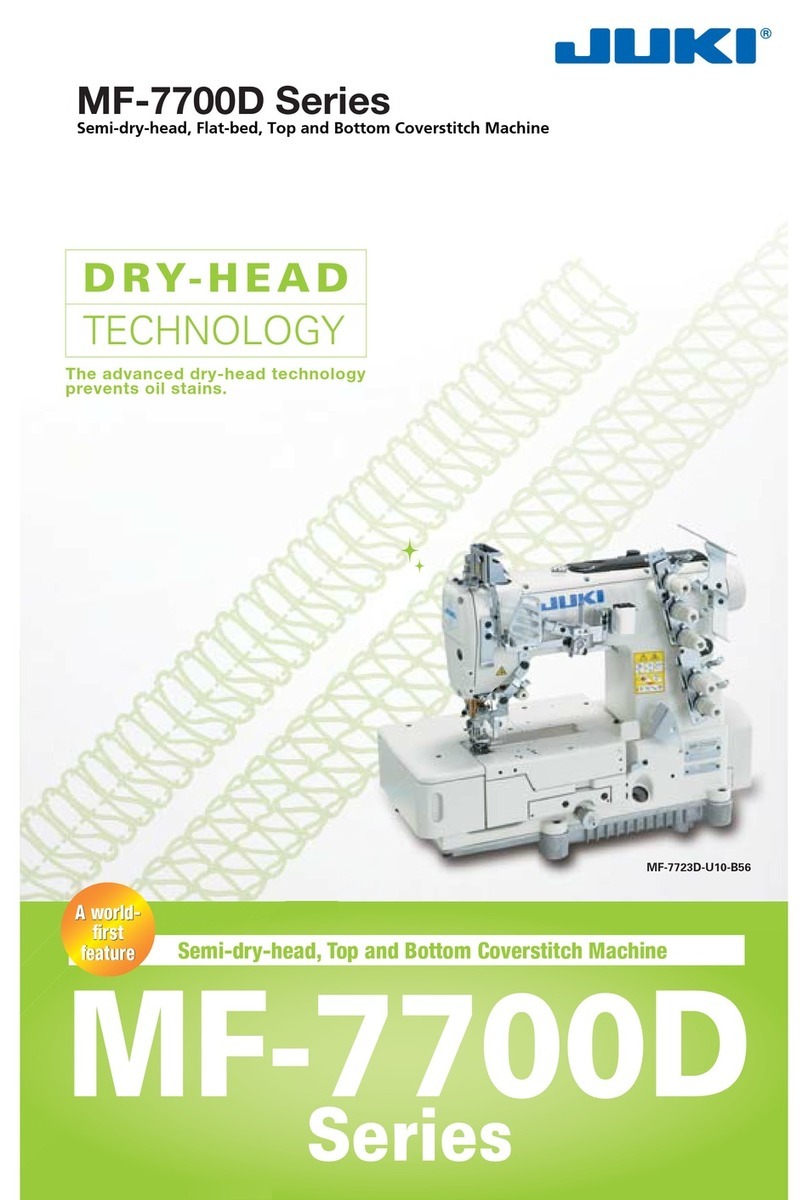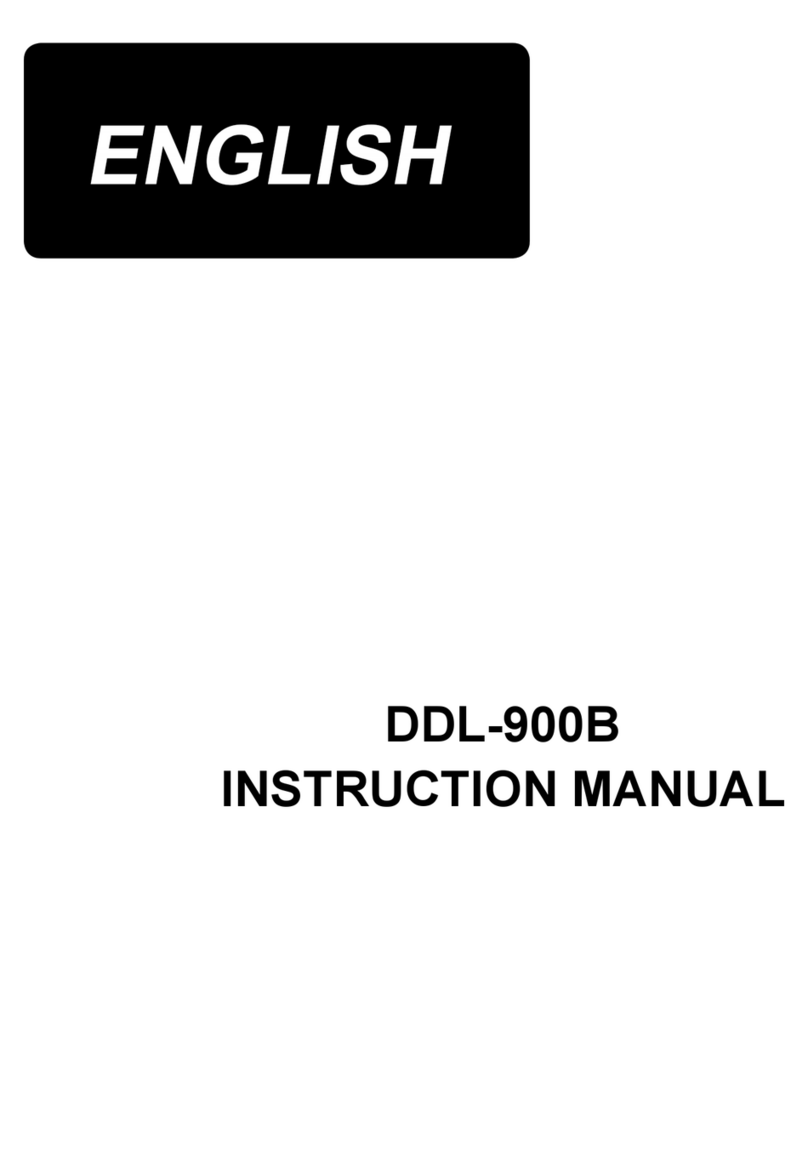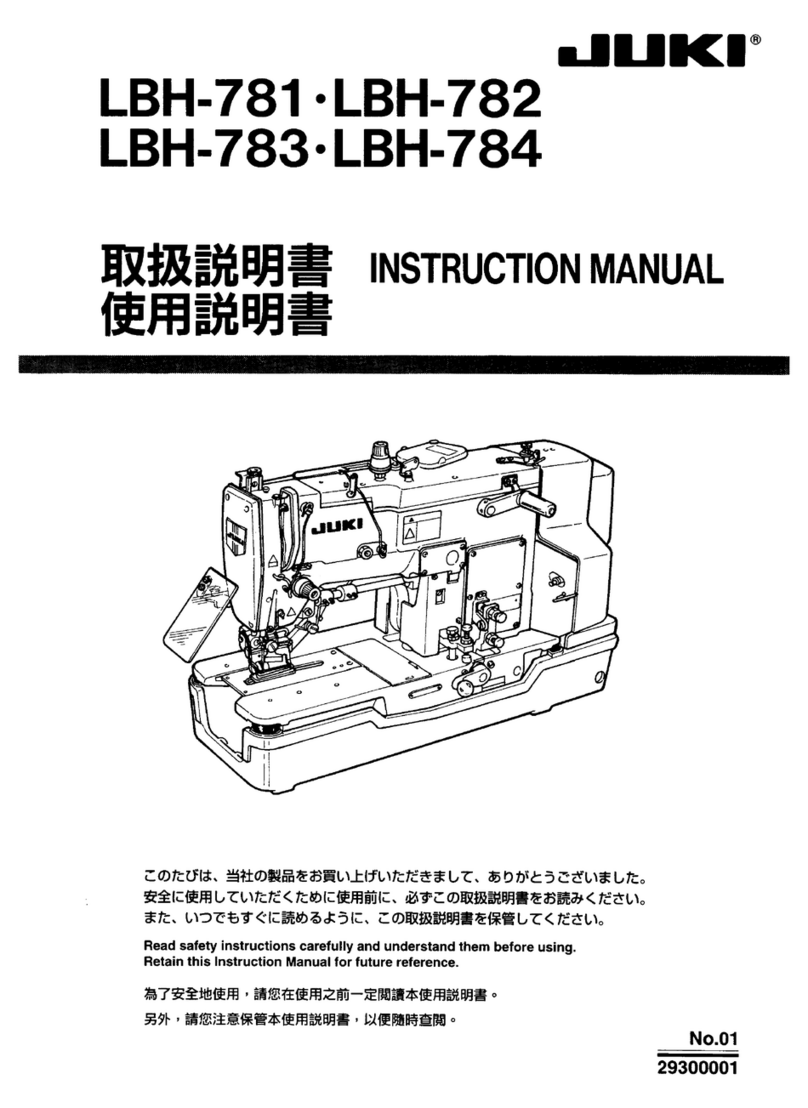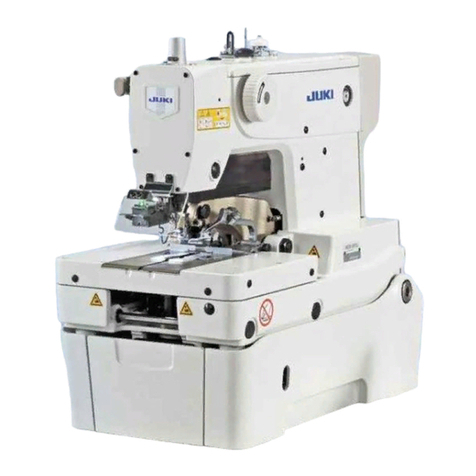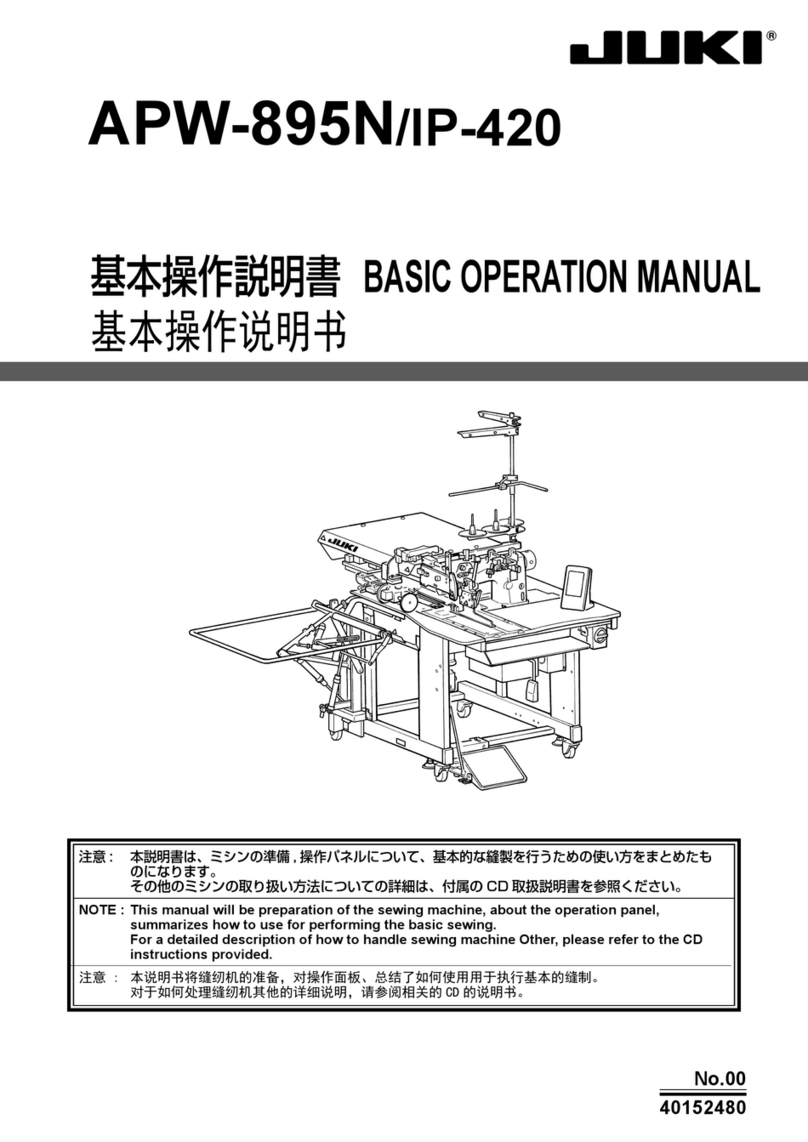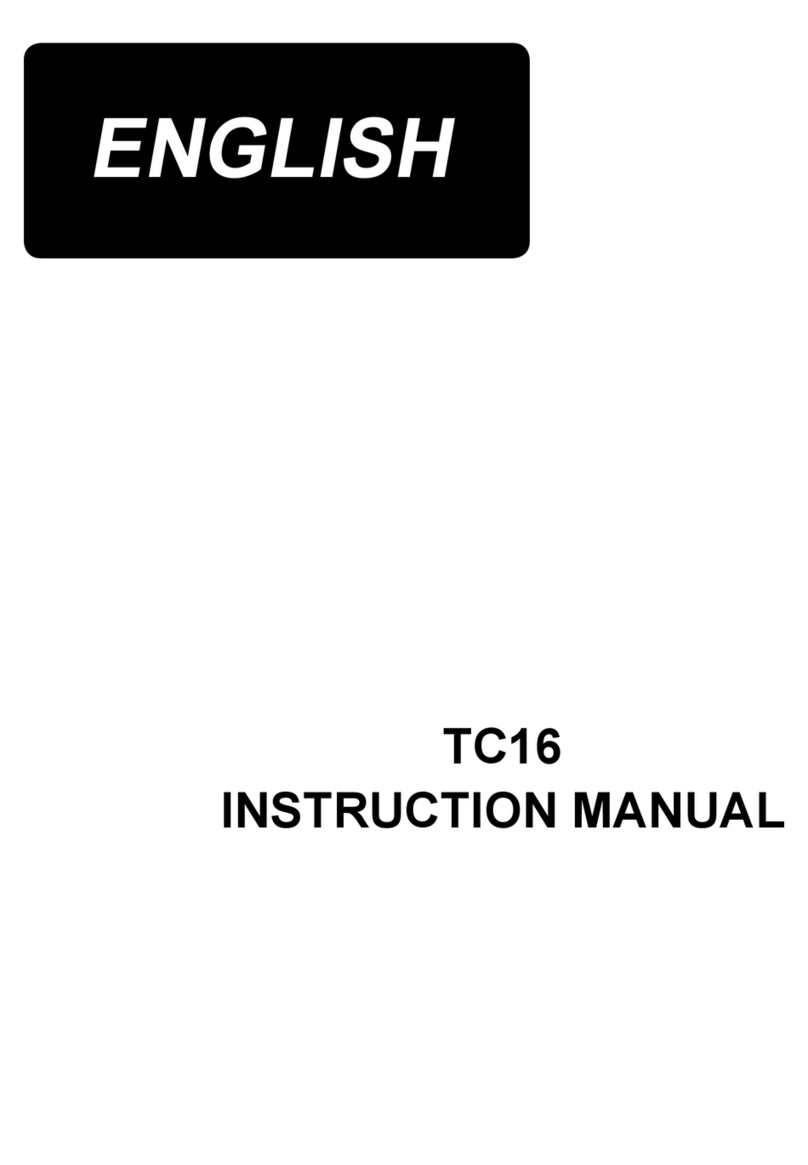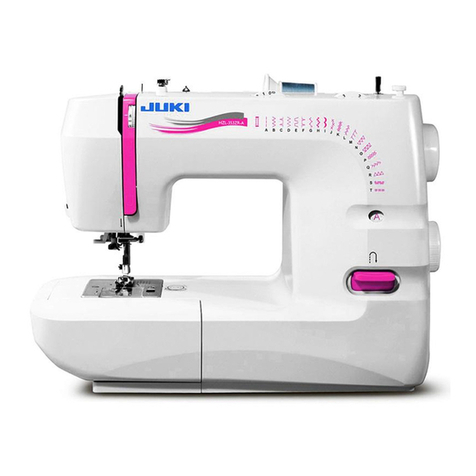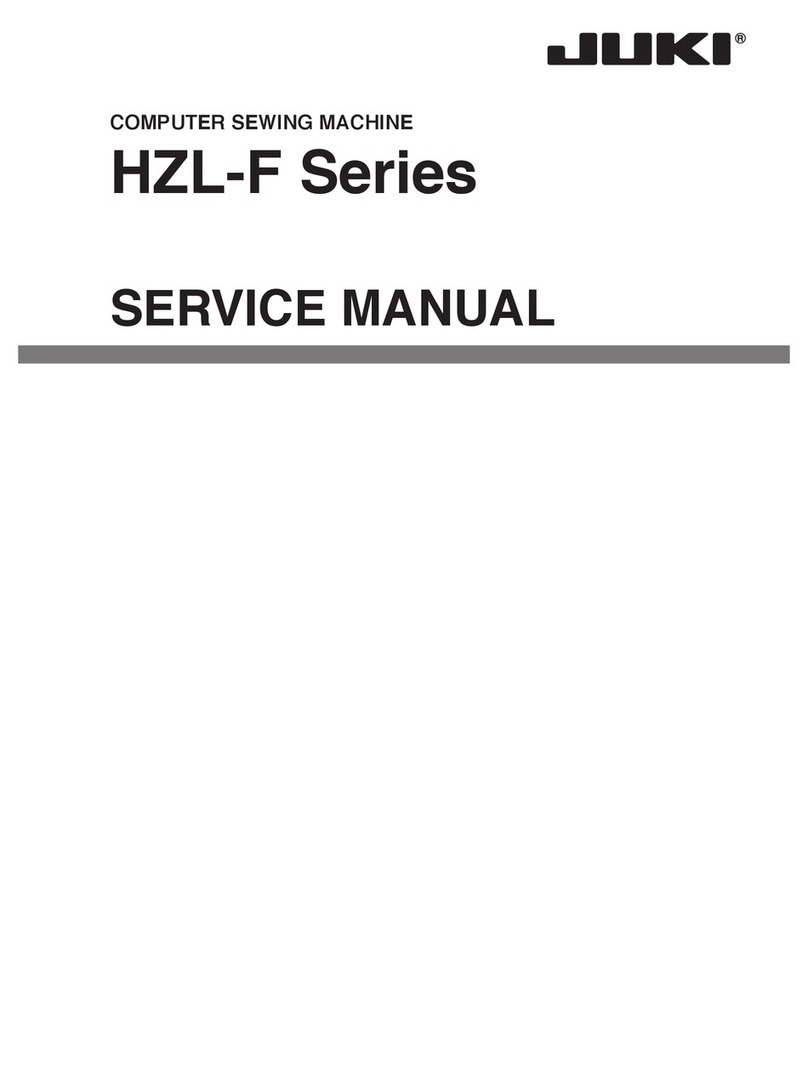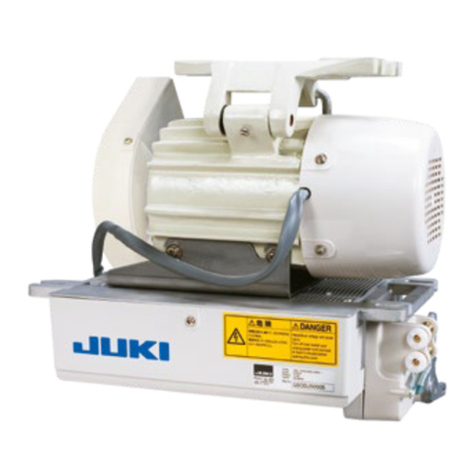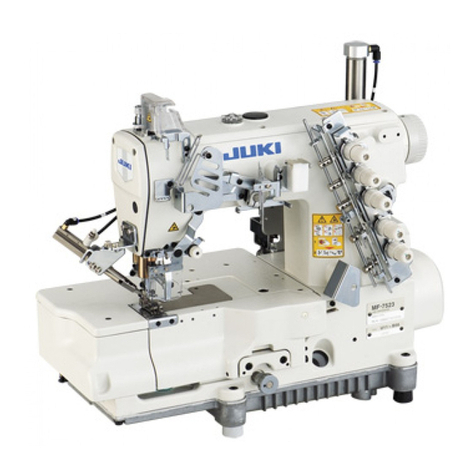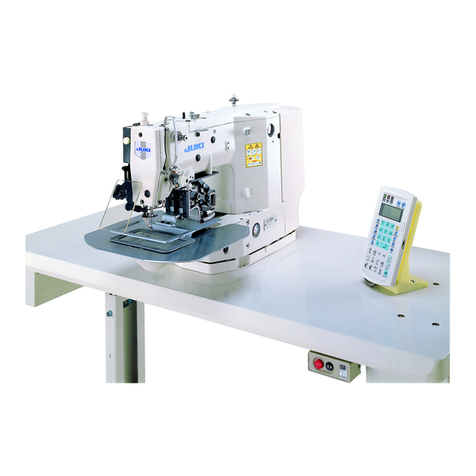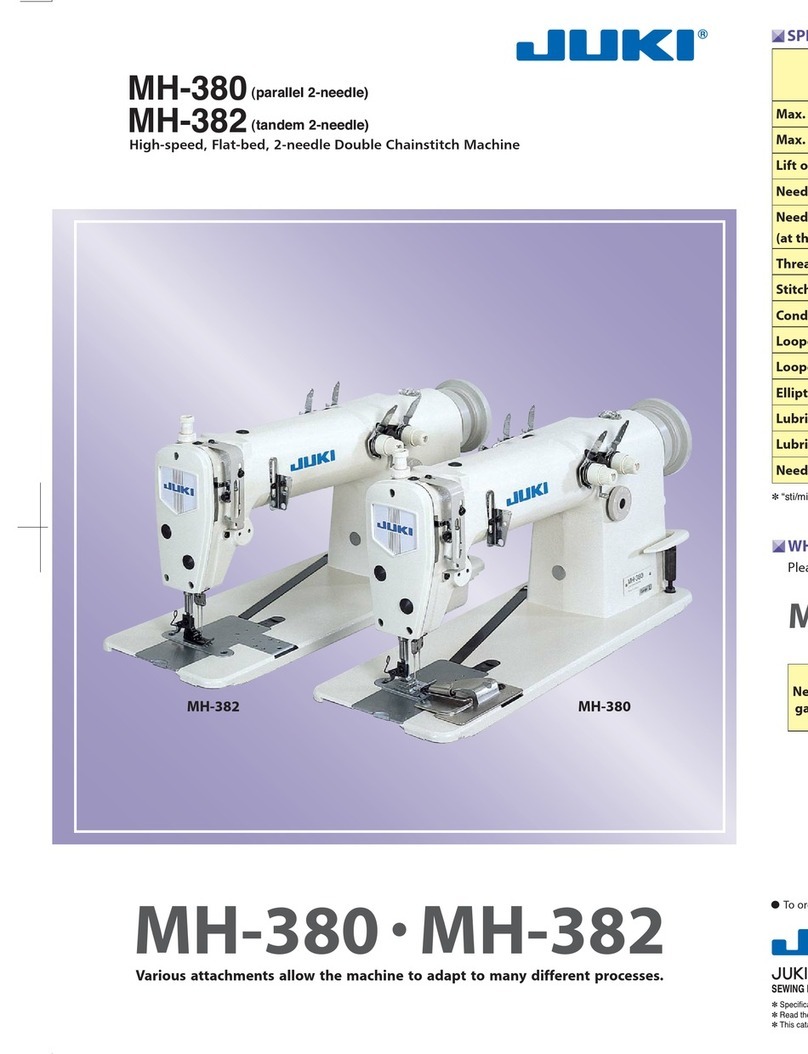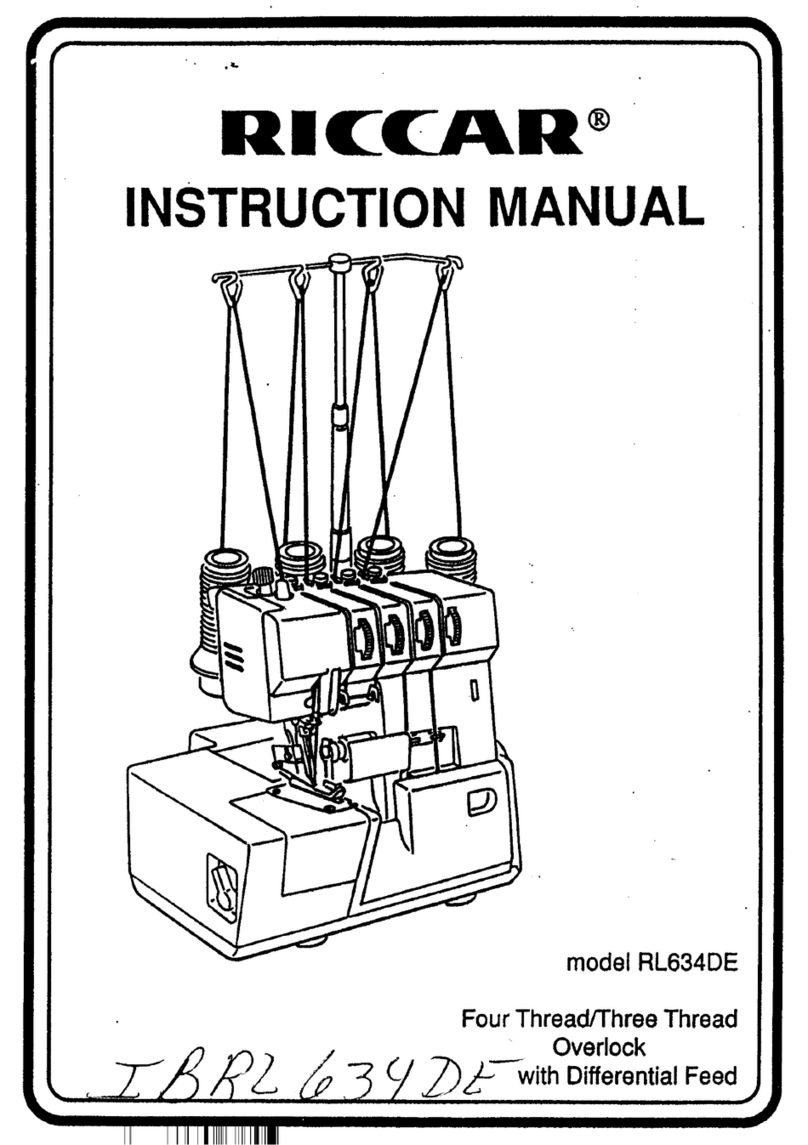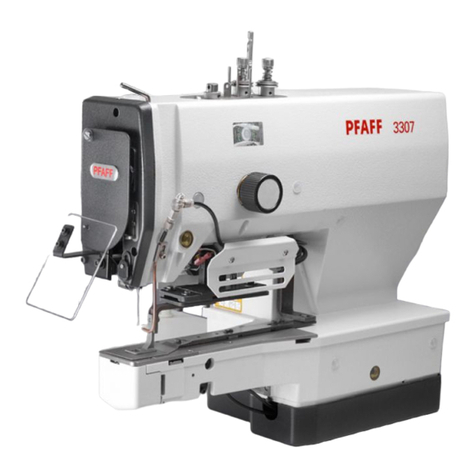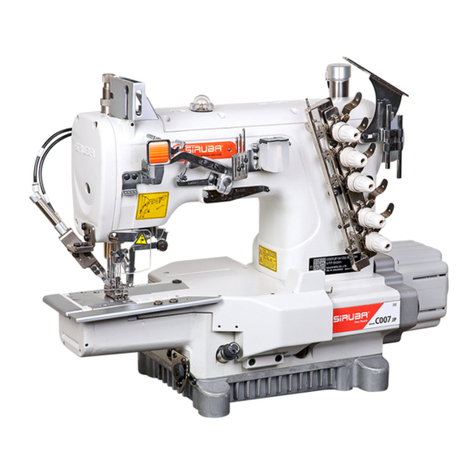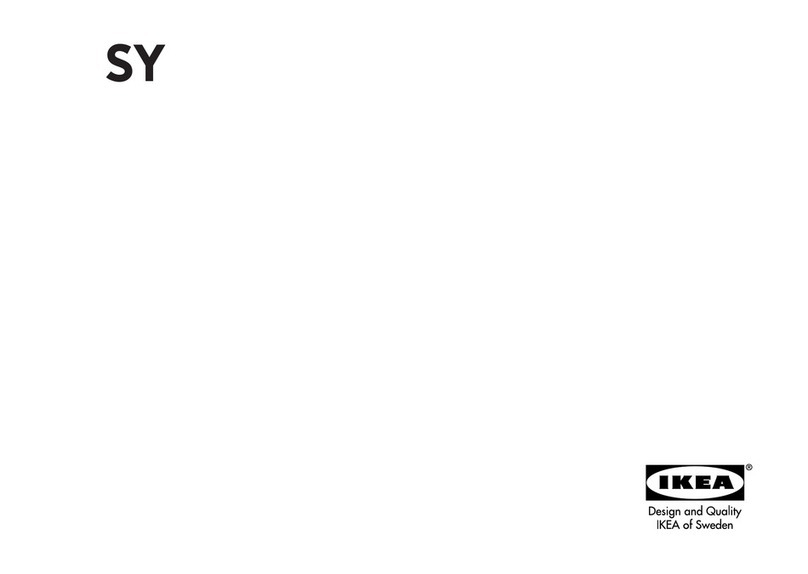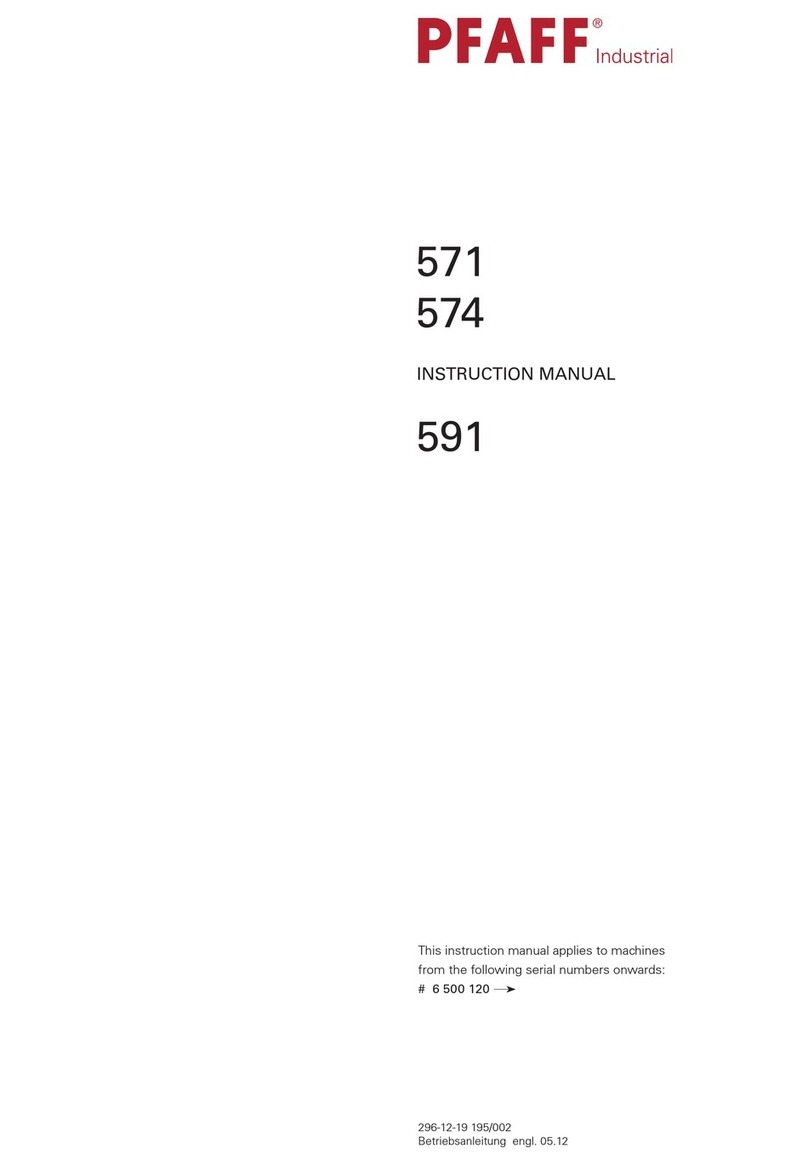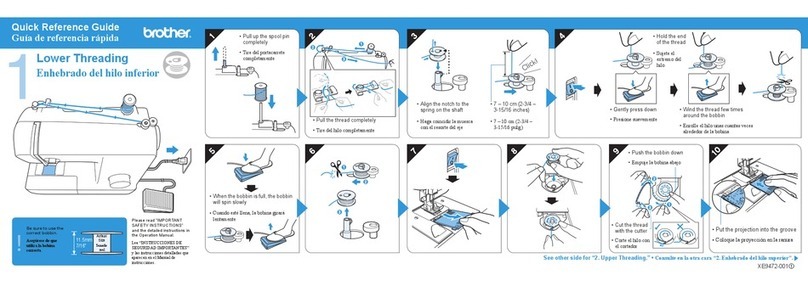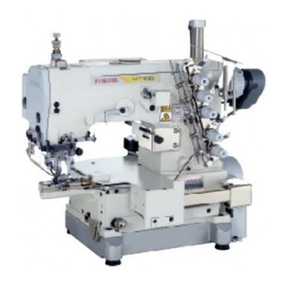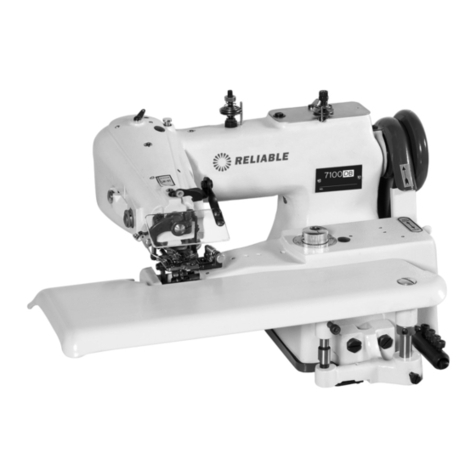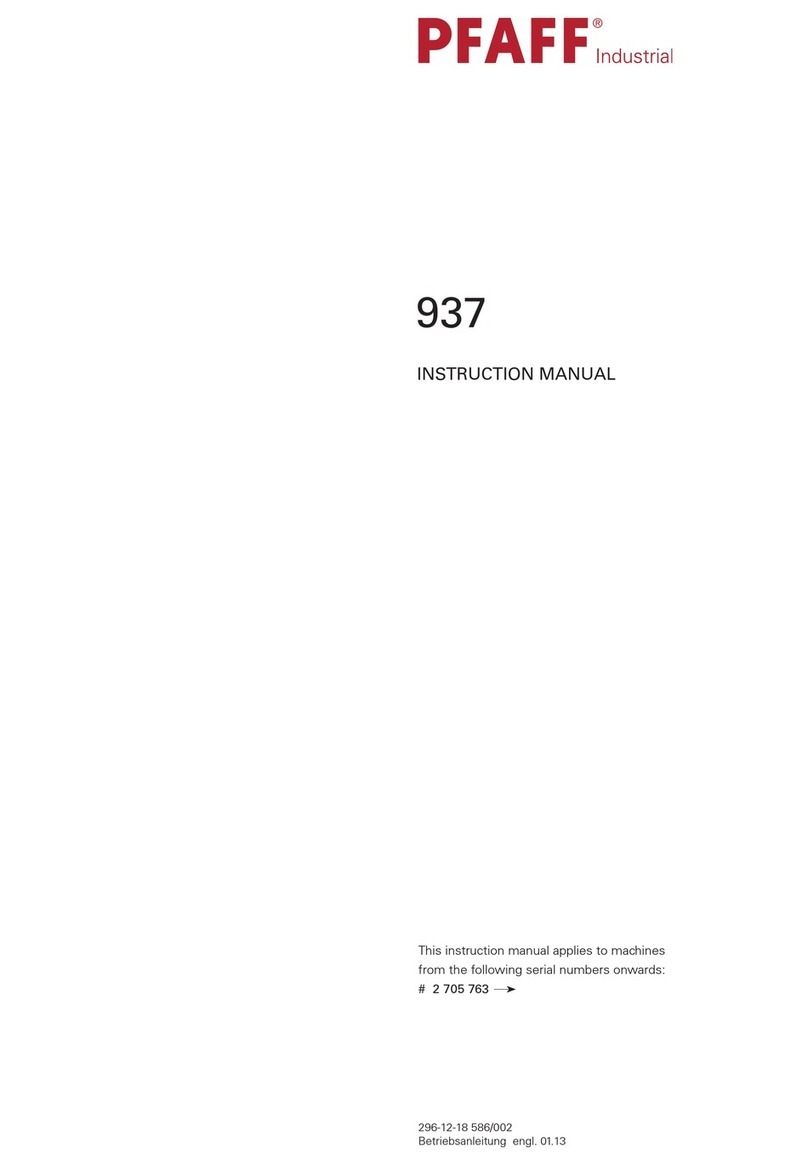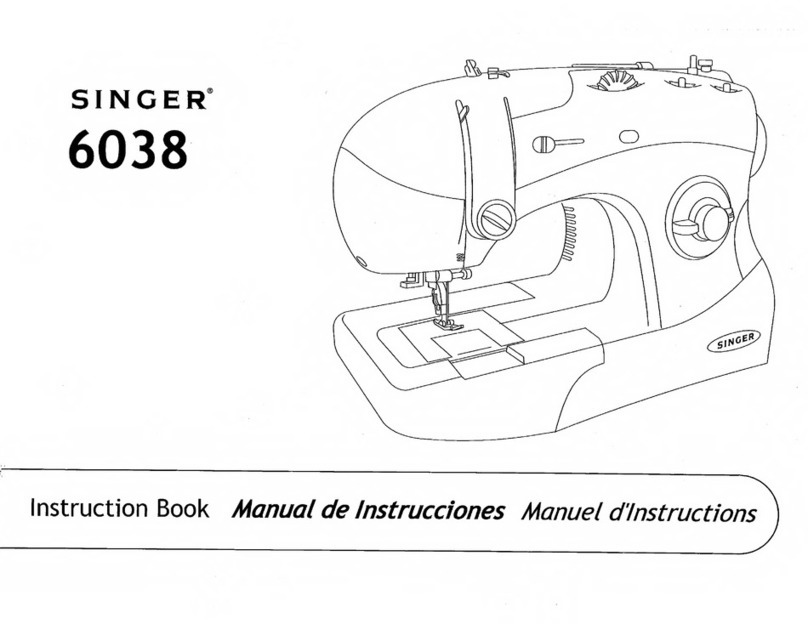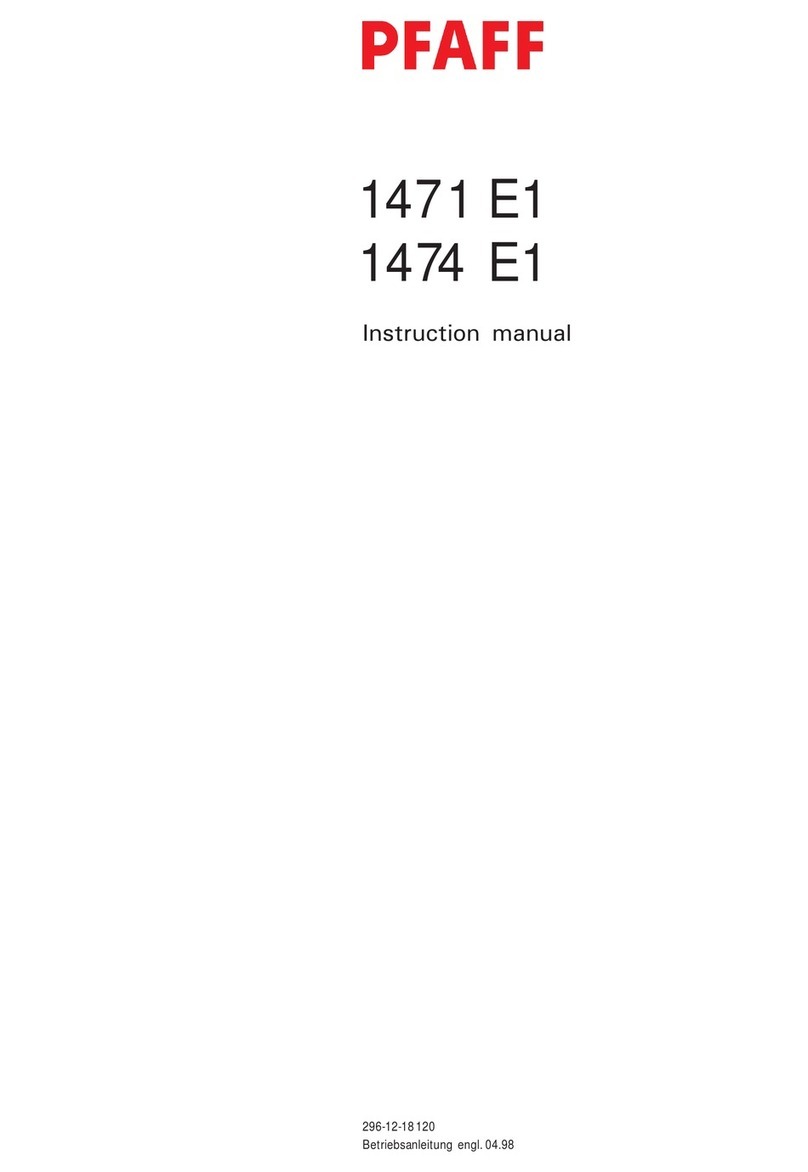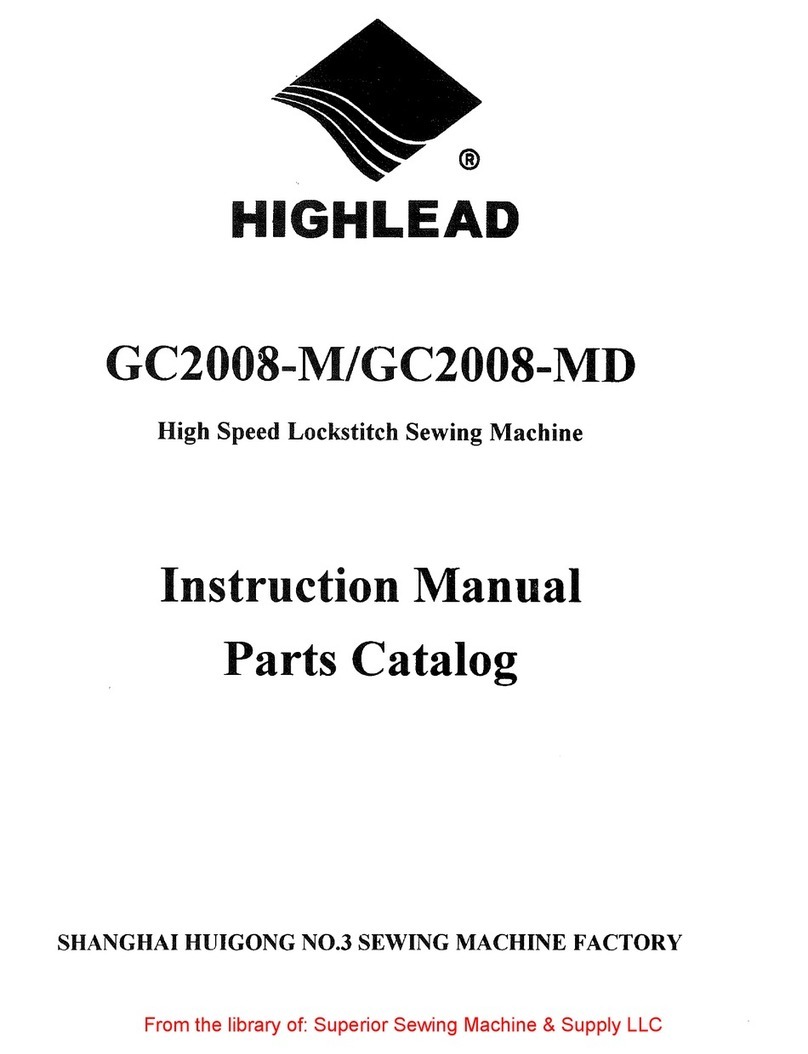CONTENTS
1. SPECIFICATIONS...................................................................................................................................1
2. NAME OF EACH COMPONENT.............................................................................................................2
(1) Name of the main unit ................................................................................................................................................. 2
3. OPERATION OF THE SEWING MACHINE ............................................................................................3
(1) Names of the operation panel switches .................................................................................................................... 3
(2) Pattern table ................................................................................................................................................................. 4
(3) How to operate and use the memory switch (User level) ........................................................................................ 5
4. STANDARD ADJUSTMENT ...................................................................................................................6
(1) Height of the needle bar.............................................................................................................................................. 6
(2) Positioning the needle and the looper....................................................................................................................... 6
(3) Timing the travel of the yoke slide............................................................................................................................. 8
(4) Timing of the tension disc No. 2 ................................................................................................................................ 8
(5) Lift and pressure of the button clamp ..................................................................................................................... 10
5. ADJUSTMENT OF THE THREAD TRIMMING MECHANISM ..............................................................10
(1) The mechanism and the name of each component of the thread trimmer .......................................................... 10
(2) Adjusting the position of the moving knife............................................................................................................. 12
(3) Adjusting the height of the thread separating claw of the moving knife ............................................................. 12
6. PROCEDURES IN DISASSEMBLING AND ASSEMBLING ................................................................14
(1) Name of each component ......................................................................................................................................... 14
(2) Disassembling the circuit board .............................................................................................................................. 16
(3) Disassembling the machine arm and bed ............................................................................................................... 18
(4) Disassembling the looper shaft ............................................................................................................................... 20
(5) Disassembling the driving shaft .............................................................................................................................. 22
7. ADJUSTMENT OF THE SENSORS......................................................................................................26
(1) Adjusting the starting sensor................................................................................................................................... 26
(2) Adjusting the presser lifter sensor .......................................................................................................................... 26
(3) Adjusting the feed origin sensor ............................................................................................................................. 28
(4) Adjusting the presser lifter stopper......................................................................................................................... 28
8. HOW TO OPERATE AND USE THE MEMORY SWITCH (SERVICE LEVEL) ....................................30
(1) Memory switch function table .................................................................................................................................. 31
9. HOW TO OPERATE AND USE THE INPUT CHECK MODE FUNCTION ...........................................33
(1) INPUT CHECK CORRESPONDENCE TABLE .......................................................................................................... 34
10. HOW TO OPERATE AND USE THE ALL CLEAR FUNCTION ...........................................................35
11. PARTS TO BE GREASESD..................................................................................................................36
12. ERROR LIST .........................................................................................................................................37
13. CHANGE-OVER OF THE POWER SOURCE VOLTAGE ....................................................................38
14. CAUSE OF TROUBLES AND THE CORRECTIVE MEASURES.........................................................39
(1) Thread trimming troubles and the corrective measures ....................................................................................... 39
(2) Cause of troubles and the corrective measures for MB-1800 ............................................................................... 40
15. CIRCUIT BOARD DIAGRAM ................................................................................................................41
(1) MAIN circuit board..................................................................................................................................................... 41
(2) PWR circuit board ..................................................................................................................................................... 42
(3) PANEL circuit board.................................................................................................................................................. 42
16. BLOCK DIAGRAM 1/2 ..........................................................................................................................43
17. CONNECTION DIAGRAM AND CIRCUIT DIAGRAM ..........................................................................45
(1) Power connection diagram....................................................................................................................................... 45
(2) Sensor connection diagram ..................................................................................................................................... 46
(3) Motor circuit diagram ................................................................................................................................................ 47
(4) Encoder circuit diagram ........................................................................................................................................... 48
(5) Solenoid circuit diagram........................................................................................................................................... 48
18. DRAWING OF THE TABLE ..................................................................................................................49

